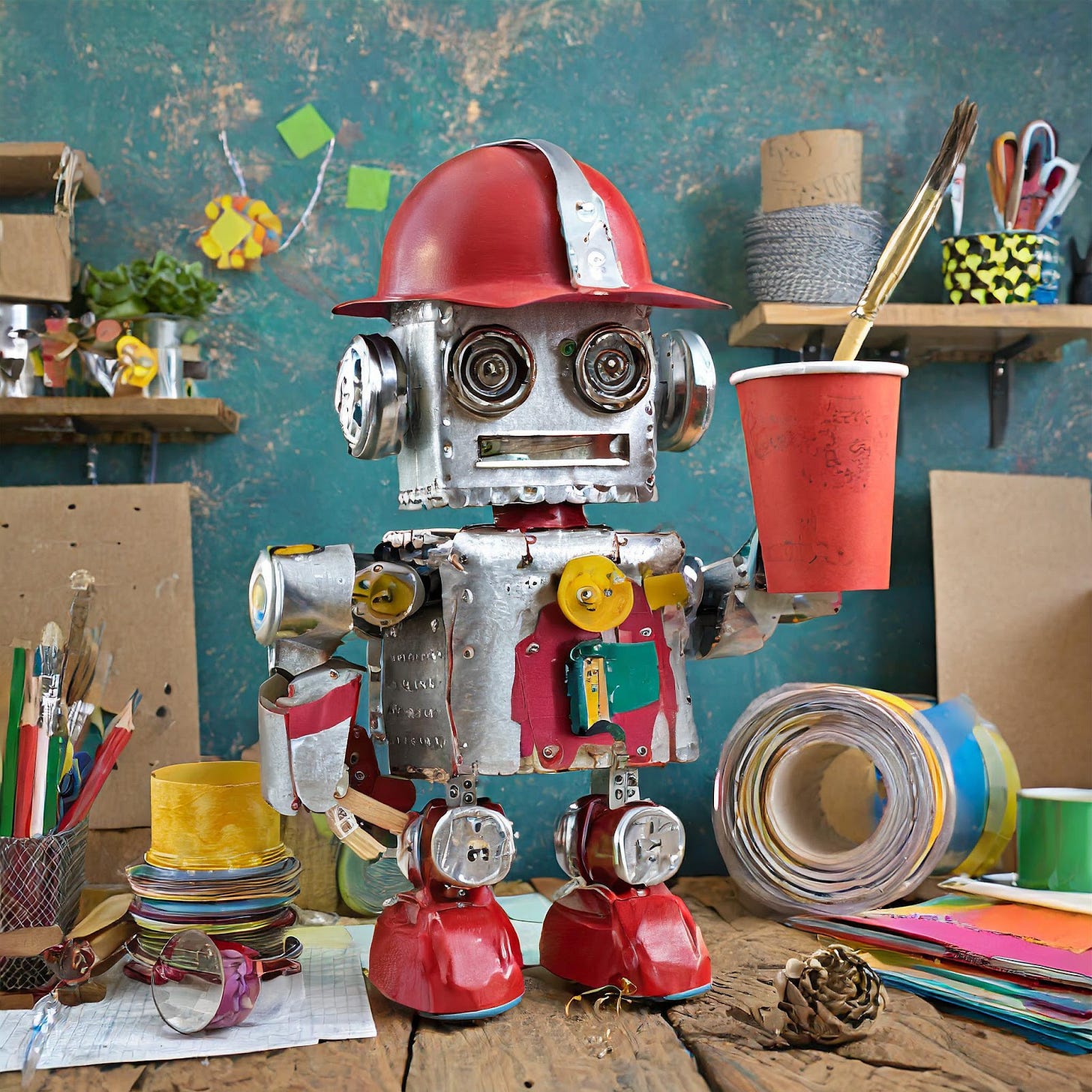Duct Tape and Development
What zip ties, duct tape, and red solo cups can teach us about building Generative AI Products
As someone who loves the idea of running outside but never actually, you know, runs outside, I recently caved and bought a basic treadmill. The goal: trick myself into moving more by making it ridiculously convenient.
And it worked! I found myself hopping on for short bursts throughout the day, and even managed a few longer runs (read: over five minutes). But there was one glaring issue: my “fancy” new treadmill lacked the basic necessity of a cup holder. Enter my husband, the ever-resourceful problem solver.
His first attempt involved a zip tie and a solo cup, which, to put it mildly, did not inspire confidence. Despite early signs that this method wasn’t going to work, he kept at it for much longer than he should have. It wasn’t until I told him to scrap that approach and try something different that he stepped back and also acknowledged that this idea wasn’t going to pan out.
After the realization that a new approach was needed, he quickly moved on to duct tape, and what emerged was a Frankensteinian contraption that, against all odds, actually worked.
Sure, it's not the most elegant solution, but it served its purpose (for now). And that's exactly how I think about prototyping and building Minimum Viable Products (MVPs) in software development.
Here's what my duct-taped cup holder reinforced about how to approach MVPs:
Don't be afraid to iterate. The zip tie was a flop, but we didn't give up, and more importantly, we didn’t continue to invest in it for too long before moving on. We learned from the failure and tried a new approach. In software development, your first attempt might not be perfect, and that's okay. Be prepared to iterate and refine your product based on user feedback.
Focus on functionality over aesthetics. My duct-taped masterpiece is far from pretty, but it holds my water bottle securely. When building an MVP, prioritize core functionality over fancy bells and whistles. Get the basic features working well before focusing too heavily on UI flourishes.
Validate your assumptions before investing heavily. We could have bought a fancy cup holder online, but we weren't sure if it would even be useful. The duct tape prototype allowed us to test the concept cheaply and easily. Similarly, an MVP helps you validate your assumptions about your product and its features before investing significant time and resources.
Remember, it's temporary. My duct-taped solution is not meant to be permanent. If I become a regular treadmill runner, I'll invest in a more robust solution. Likewise, an MVP is a stepping stone to a more complete product. It's a tool for learning and iterating, not the final destination.
So, the next time you're building a new product, remember the duct-taped cup holder. Don't be afraid to start small, iterate quickly, and focus on functionality. You can always refine and improve later, but first, validate your assumptions and prove that your product solves a real need.
In the case of my frankenstein-esque solution, what I came to realize was that the cup-holder wasn’t the only problem. It turns out that the treadmill itself wasn’t the right investment. While it may have been a good walking treadmill for under desks, the belt slipped when I tried to run. So this device is now going to have a new home under my husband's desk, and I’ve decided to invest in a Peloton – and I’m glad I didn’t buy a cup holder for this treadmill since my next one has one already built in. This was yet another good lesson on MVPs – make sure you're investing in the right core product before you focus on the features!






